AWS Certified AI Practitioner
Applications of Foundation Models
Agents for Multi step tasks
In this article, we explore how specialized agents can manage multi-step workflows by integrating domain-specific models. Imagine a scenario where one model possesses in-depth knowledge of biology, another of physiology, and yet another of genetics. While each model excels at understanding and generating content, none can directly execute real-world tasks. Instead, an orchestration layer or custom programming bridges the gap between model capabilities and practical applications.
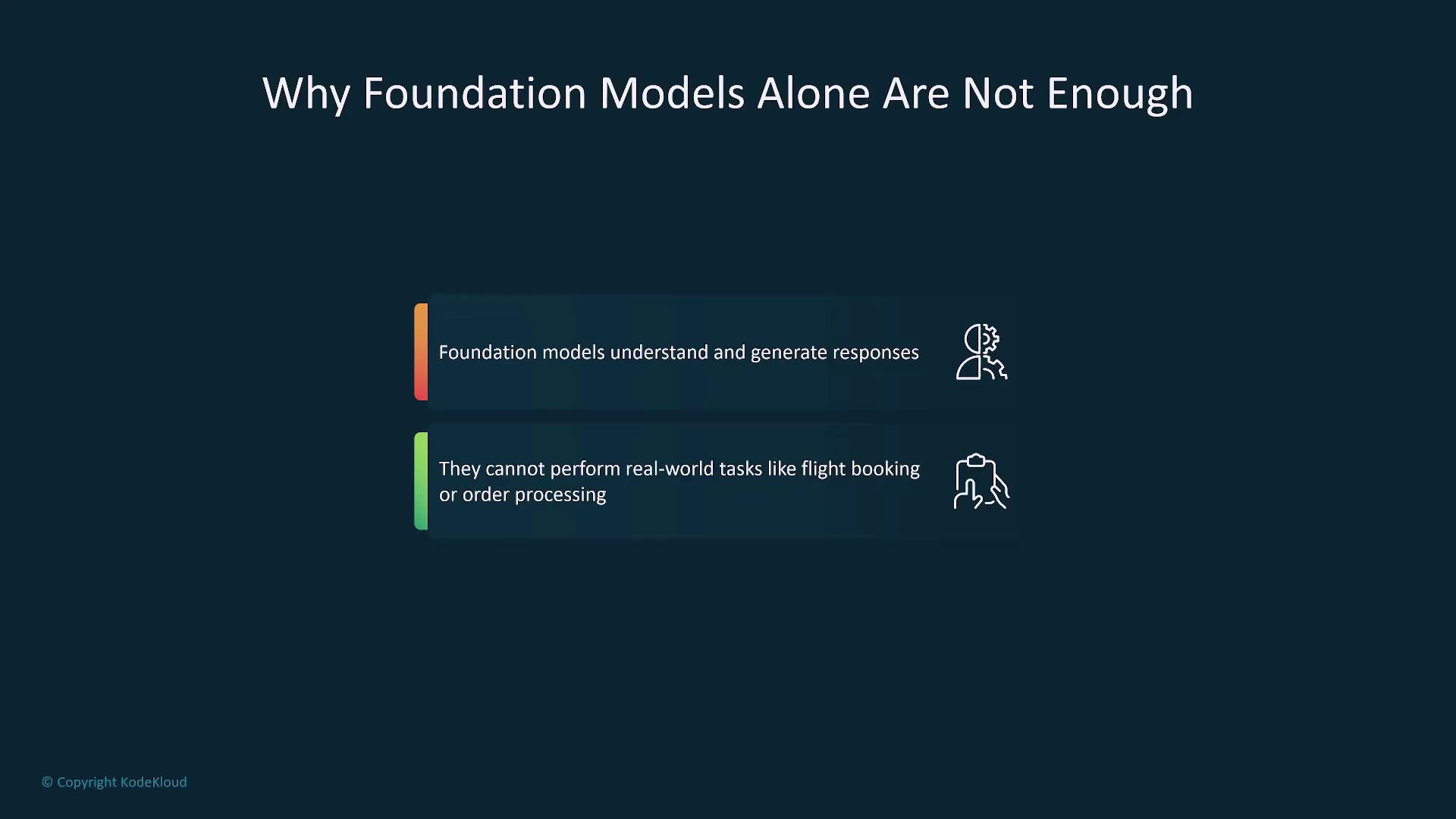
Agents for multi-step tasks are specialized software components—or even dedicated models—that coordinate interactions with databases, APIs, and external systems. This orchestration is fundamental to services like Amazon Bedrock Agents, an AWS-managed solution that enables foundation models to perform complex multi-step tasks.
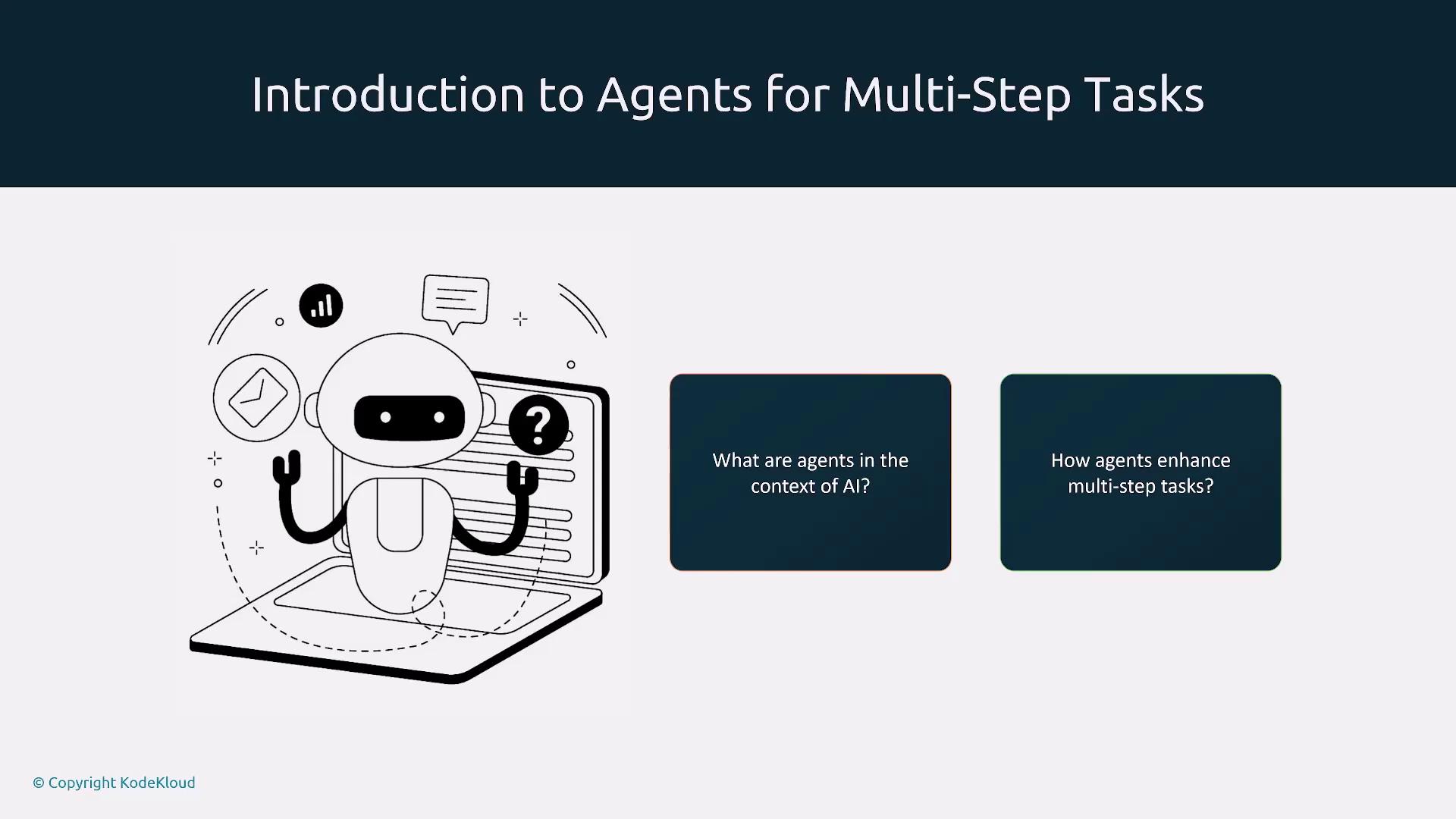
For instance, in an Amazon Bedrock Agents workflow, a user submits a question that is processed by an agent. The agent gathers required data, re-embeds tasks, sends emails, and interacts with databases—all under the orchestration of a fully managed model. Unlike AWS Step Functions, this solution provides model-driven orchestration for executing multi-step tasks.

The workflow is designed to break down a complex task into smaller, manageable parts. In many cases, the model will request additional information from other services to ensure efficient handling of tasks such as flight booking or order processing.
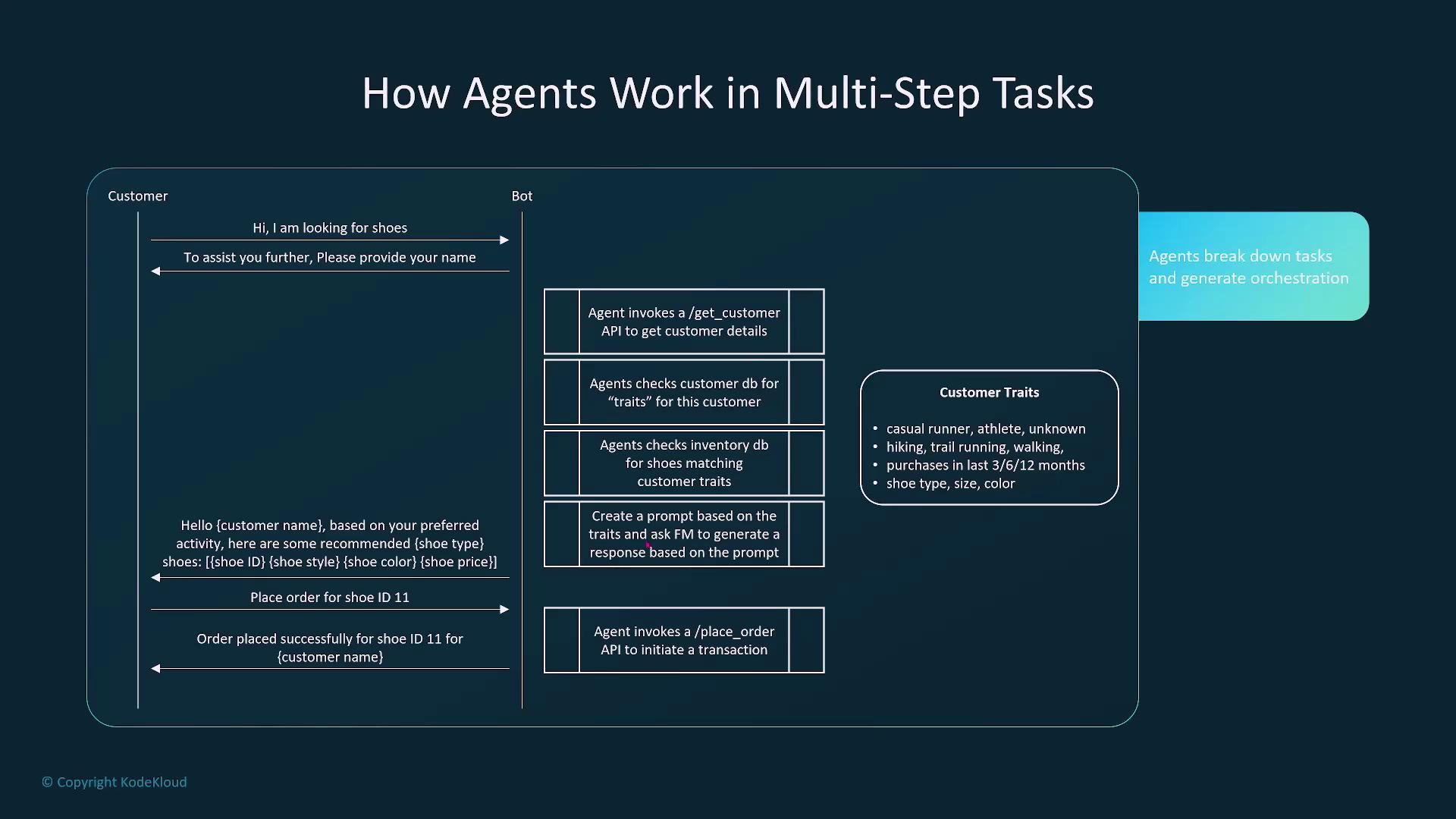
By automating actions across various systems and data sources, agents securely connect to external APIs, ingest data, and fulfill actions. This connectivity is crucial for integrating AI with real-world applications.

Agents also improve accuracy by combining information from multiple models or by invoking APIs to verify the status of real-world entities. This capability is essential for applications requiring real-time or domain-specific knowledge—such as monitoring inventory levels, managing booking preferences, or checking server statuses.
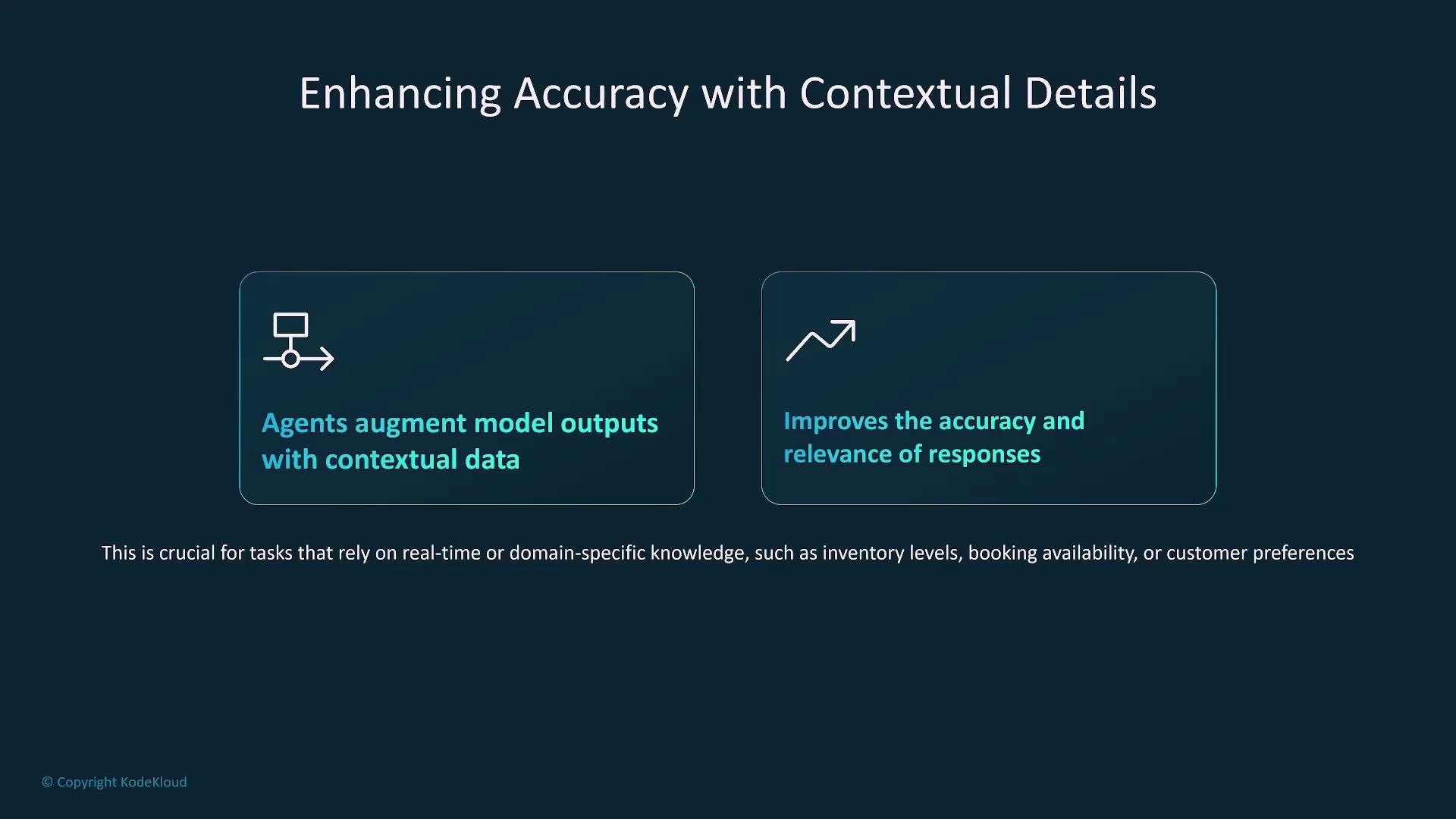
In task fulfillment workflows, agents manage the integration between various systems, calling the appropriate APIs, collating data from knowledge bases, inventory systems, and financial systems. This multi-agent orchestration automates complex workflows by integrating AI models with operational systems that perform specific actions.
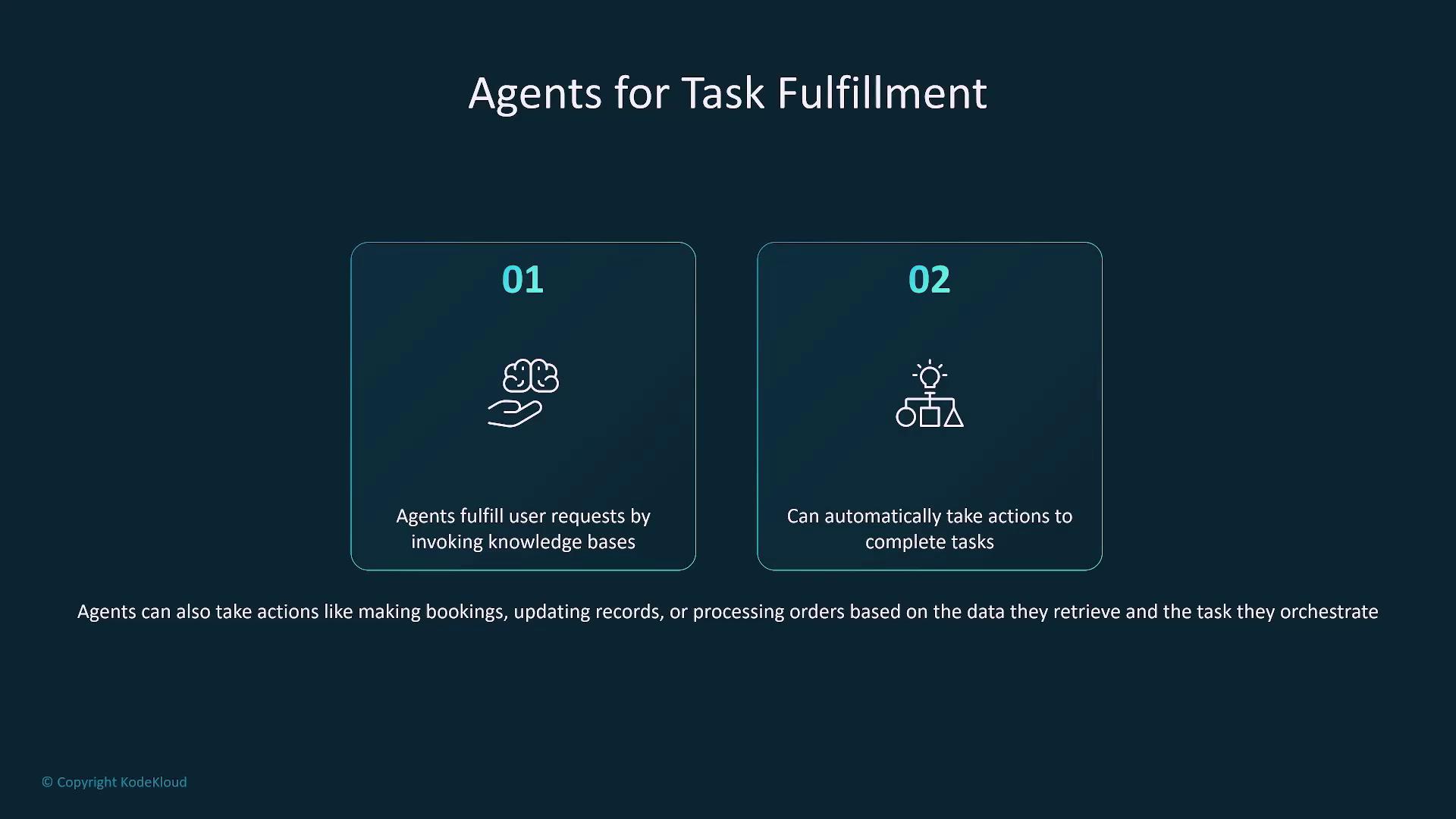
Key Benefits
• Automates complex workflows
• Seamlessly connects AI models with operational systems
• Enhances efficiency, accuracy, and response times
While integrating agents offers significant advantages, it may introduce challenges such as ensuring security, maintaining data privacy, and continuous monitoring of workflow changes. It is crucial to adhere to compliance requirements (e.g., GDPR) and ensure that agents operate within established constraints.
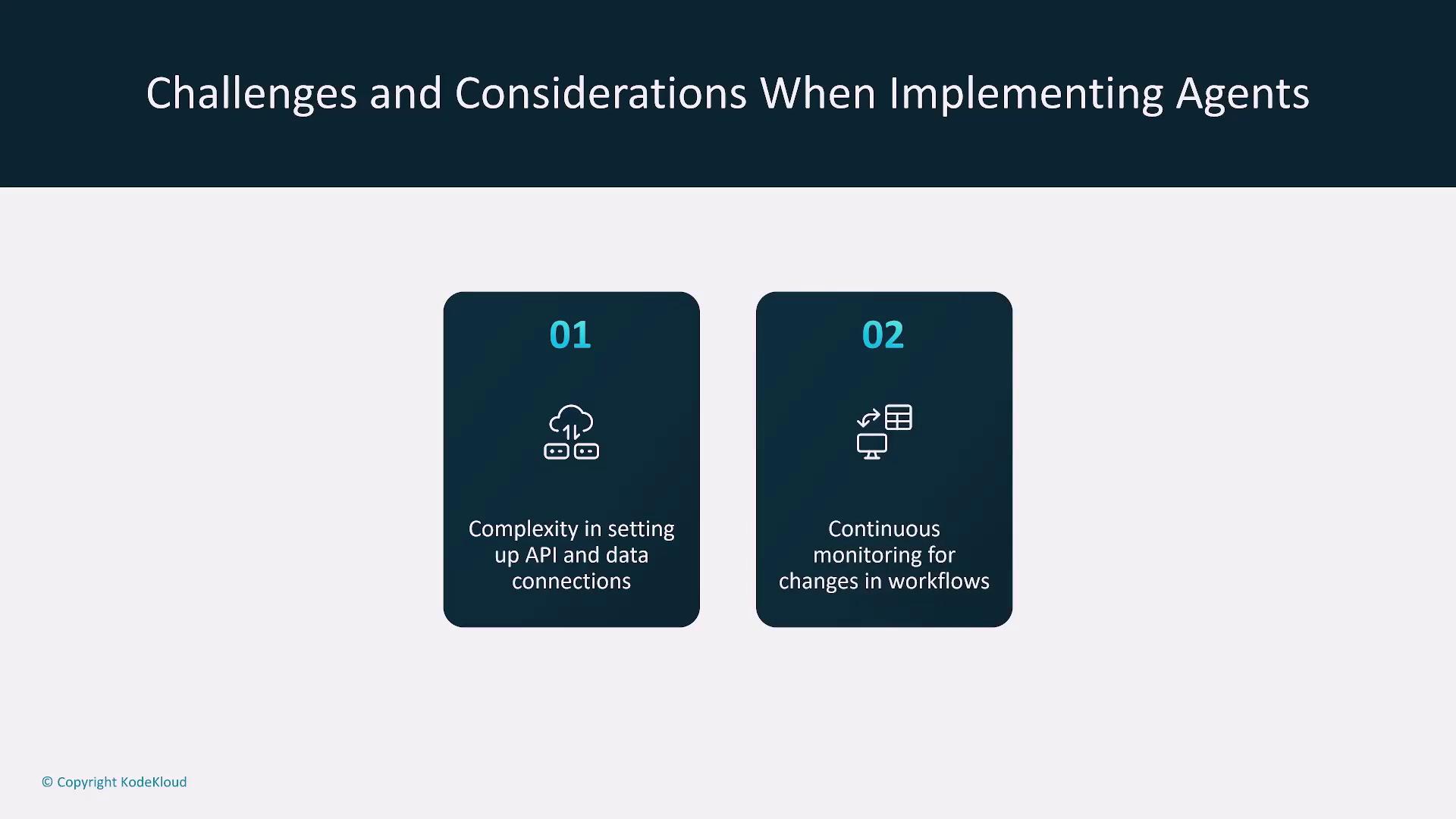
Scalability is another vital consideration. AWS infrastructure effectively supports large-scale, multi-step tasks, making it easier to scale agent-based workflows as business needs evolve.

As the integration of agents expands across sectors such as e-commerce, healthcare, IoT, finance, and security, their ability to connect with robotics, IoT devices, and fintech applications becomes increasingly important. For example, imagine having a specialized agent for Terraform, another for AWS, and a third for microservices architecture; together, they can collaboratively create a microservices-based container infrastructure on AWS by leveraging their domain expertise.
In summary, agents—especially when integrated with platforms like Amazon Bedrock—enable efficient multi-step workflows by automating tasks, securely connecting diverse systems, and enhancing the execution of complex operations through the combined strengths of specialized models.
Thanks for reading.
Watch Video
Watch video content